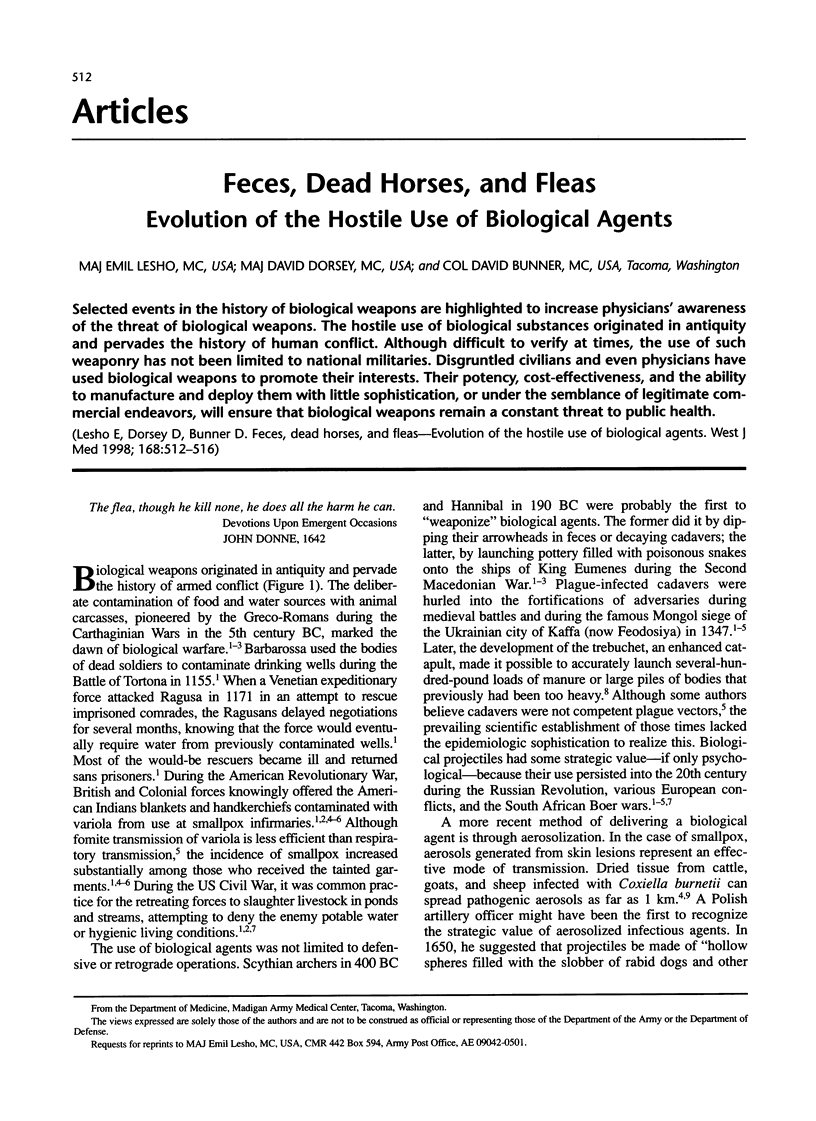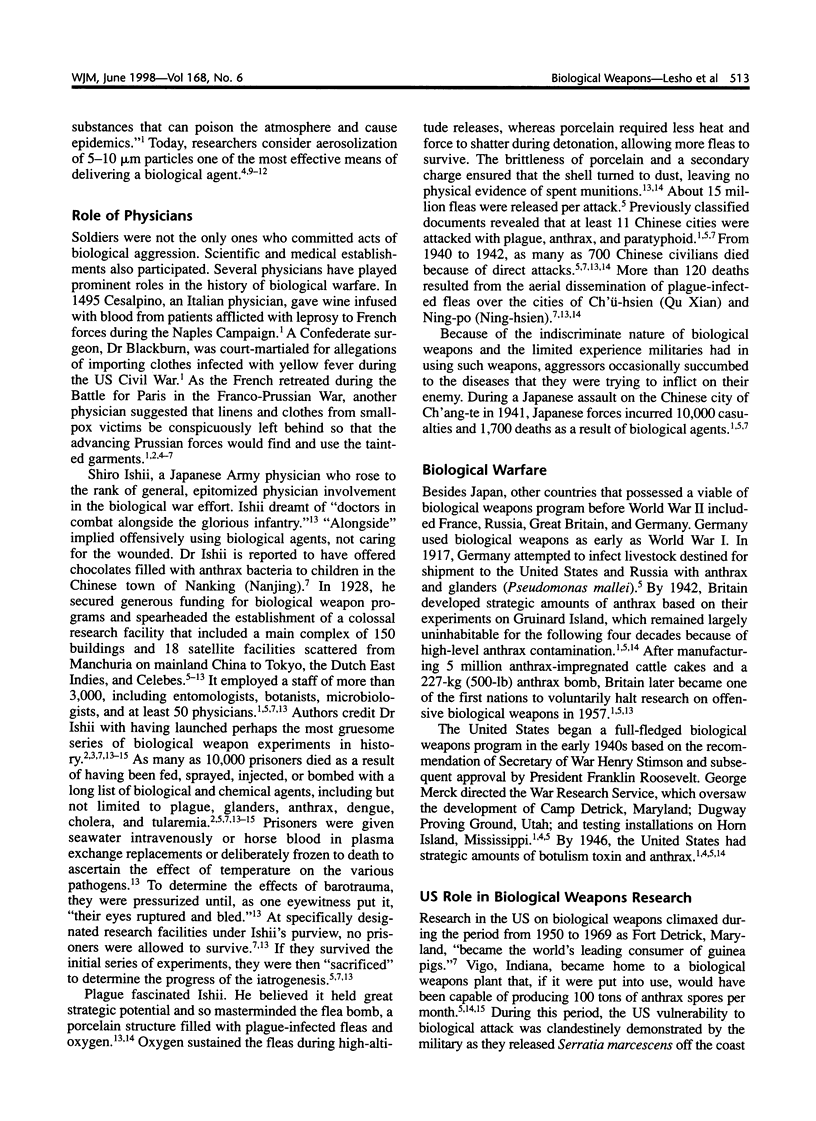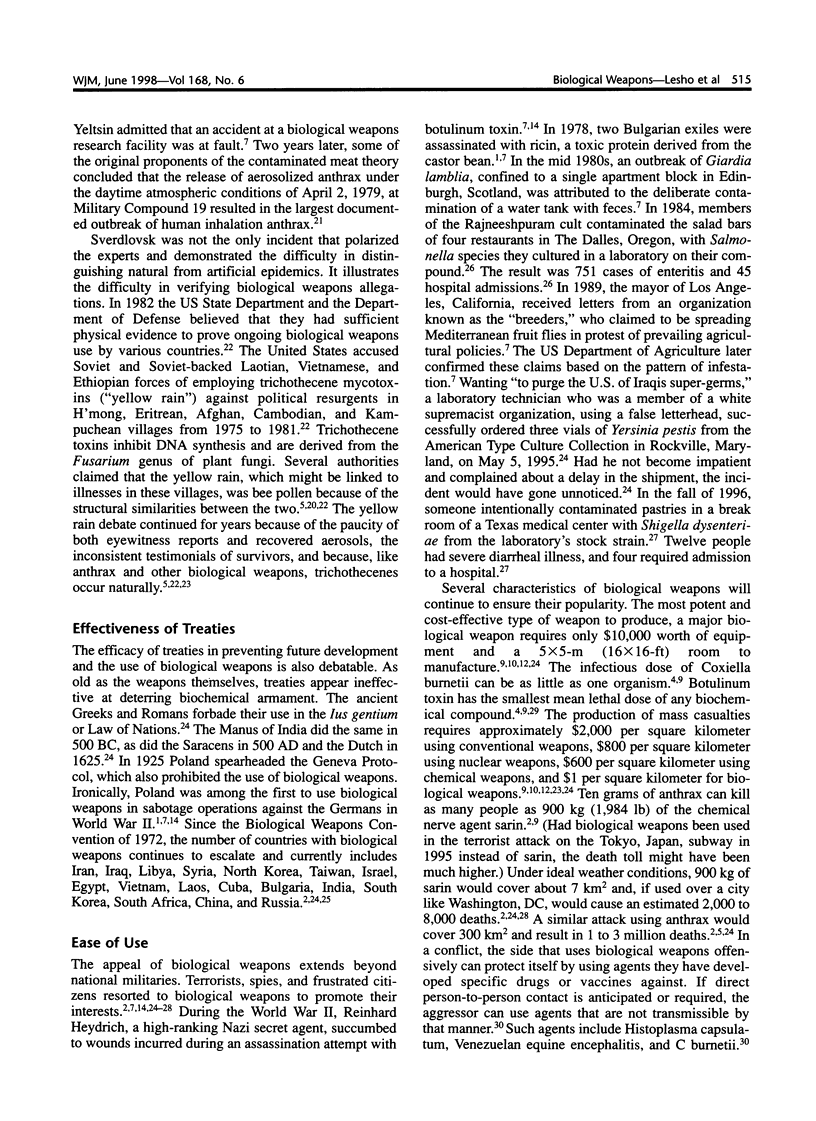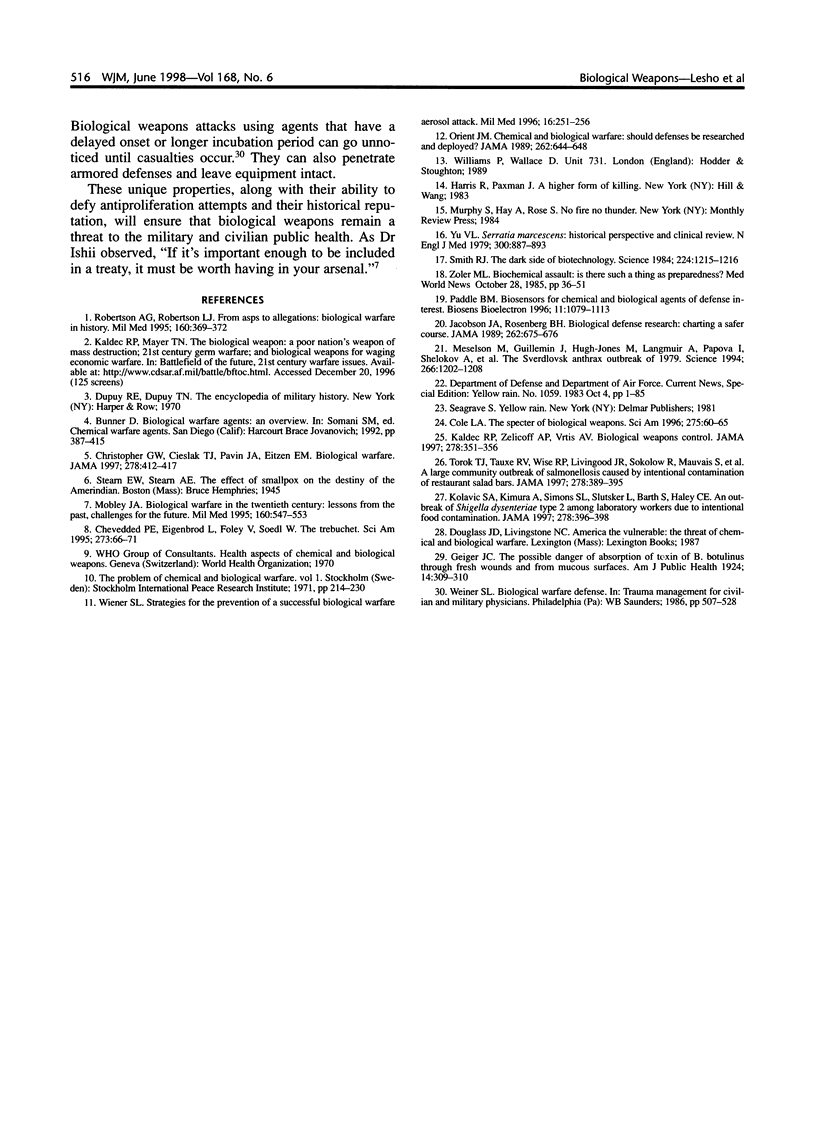Abstract
Selected events in the history of biological weapons are highlighted to increase physicians' awareness of the threat of biological weapons. The hostile use of biological substances originated in antiquity and pervades the history of human conflict. Although difficult to verify at times, the use of such weaponry has not been limited to national militaries. Disgruntled civilians and even physicians have used biological weapons to promote their interests. Their potency, cost-effectiveness, and the ability to manufacture and deploy them with little sophistication, or under the semblance of legitimate commercial endeavors, will ensure that biological weapons remain a constant threat to public health.
Full text
PDF




Selected References
These references are in PubMed. This may not be the complete list of references from this article.
- Christopher G. W., Cieslak T. J., Pavlin J. A., Eitzen E. M., Jr Biological warfare. A historical perspective. JAMA. 1997 Aug 6;278(5):412–417. [PubMed] [Google Scholar]
- Cole L. A. The specter of biological weapons. Sci Am. 1996 Dec;275(6):60–65. doi: 10.1038/scientificamerican1296-60. [DOI] [PubMed] [Google Scholar]
- Geiger J. C. THE POSSIBLE DANGER OF ABSORPTION OF TOXIN OF B. BOTULINUS THROUGH FRESH WOUNDS AND FROM MUCOUS SURFACES. Am J Public Health (N Y) 1924 Apr;14(4):309–310. doi: 10.2105/ajph.14.4.309. [DOI] [PMC free article] [PubMed] [Google Scholar]
- Jacobson J. A., Rosenberg B. H. Biological defense research: charting a safer course. JAMA. 1989 Aug 4;262(5):675–676. [PubMed] [Google Scholar]
- Kadlec R. P., Zelicoff A. P., Vrtis A. M. Biological weapons control. Prospects and implications for the future. JAMA. 1997 Aug 6;278(5):351–356. doi: 10.1001/jama.278.5.351. [DOI] [PubMed] [Google Scholar]
- Kolavic S. A., Kimura A., Simons S. L., Slutsker L., Barth S., Haley C. E. An outbreak of Shigella dysenteriae type 2 among laboratory workers due to intentional food contamination. JAMA. 1997 Aug 6;278(5):396–398. [PubMed] [Google Scholar]
- Meselson M., Guillemin J., Hugh-Jones M., Langmuir A., Popova I., Shelokov A., Yampolskaya O. The Sverdlovsk anthrax outbreak of 1979. Science. 1994 Nov 18;266(5188):1202–1208. doi: 10.1126/science.7973702. [DOI] [PubMed] [Google Scholar]
- Mobley J. A. Biological warfare in the twentieth century: lessons from the past, challenges for the future. Mil Med. 1995 Nov;160(11):547–553. [PubMed] [Google Scholar]
- Orient J. M. Chemical and biological warfare. Should defenses be researched and deployed? JAMA. 1989 Aug 4;262(5):644–648. [PubMed] [Google Scholar]
- Paddle B. M. Biosensors for chemical and biological agents of defence interest. Biosens Bioelectron. 1996;11(11):1079–1113. doi: 10.1016/0956-5663(96)82333-5. [DOI] [PubMed] [Google Scholar]
- Robertson A. G., Robertson L. J. From asps to allegations: biological warfare in history. Mil Med. 1995 Aug;160(8):369–373. [PubMed] [Google Scholar]
- Smith R. J. The dark side of biotechnology. Science. 1984 Jun 15;224(4654):1215–1216. doi: 10.1126/science.6587564. [DOI] [PubMed] [Google Scholar]
- Török T. J., Tauxe R. V., Wise R. P., Livengood J. R., Sokolow R., Mauvais S., Birkness K. A., Skeels M. R., Horan J. M., Foster L. R. A large community outbreak of salmonellosis caused by intentional contamination of restaurant salad bars. JAMA. 1997 Aug 6;278(5):389–395. doi: 10.1001/jama.1997.03550050051033. [DOI] [PubMed] [Google Scholar]
- Wiener S. L. Strategies for the prevention of a successful biological warfare aerosol attack. Mil Med. 1996 May;161(5):251–256. [PubMed] [Google Scholar]
- Yu V. L. Serratia marcescens: historical perspective and clinical review. N Engl J Med. 1979 Apr 19;300(16):887–893. doi: 10.1056/NEJM197904193001604. [DOI] [PubMed] [Google Scholar]
- Zoler M. L. Biochemical assault. Is there such a thing as preparedness? Med World News. 1985 Oct 28;26(20):36-42, 47-51. [PubMed] [Google Scholar]


